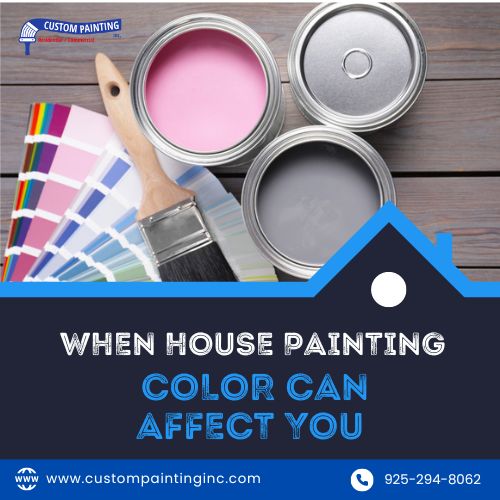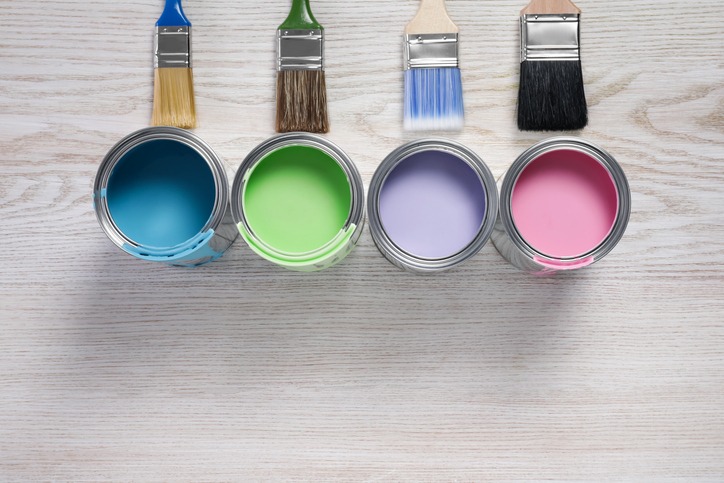Choosing the right paint color for your home can do more than just change its appearance. Studies show that colors can influence your mood, energy levels, and even your behavior.
Homeowners and designers alike recognize the power of color in creating a comfortable living space. Join us as we take a look at how house painting colors can affect you and your everyday life.
How Can Colors Affect You?
Colors play a major role in our daily lives. Not only does it help improve the appearance of objects or surfaces, but it can also affect how we feel and behave whenever we see them. Here are several ways colors can affect you:
1. Mood Enhancement
Different colors can evoke different emotions. For example, blue is often associated with calmness and tranquility. Painting a room blue can create a peaceful environment. On the other hand, bright colors like yellow can bring feelings of happiness and energy. Choosing the right colors for your space can help improve your overall mood.
2. Energy Levels
Colors can also affect your energy levels. Red is a stimulating color that can increase your heart rate and make you feel more energetic. It is a great choice for spaces where you need to be active, like a home gym. In contrast, colors like green can have a relaxing effect, which can be beneficial in areas meant for rest and relaxation.
3. Focus and Productivity
Certain colors can help improve focus and productivity. Shades of green and blue are known to enhance concentration and efficiency. These colors are often used in workspaces and offices to create an environment conducive to productivity. Using these colors in your home office can help you stay focused on your tasks.
4. Appetite and Eating Habits
Colors can also influence your appetite and eating habits. Warm colors like red and orange are known to stimulate appetite, making them a good choice for dining rooms and kitchens. Conversely, cool colors like blue can suppress appetite, which can be useful if you are trying to eat less.
5. Social Interaction
The colors in your home can affect how people interact in a space. Warm, inviting colors like beige and soft yellows can make guests feel welcome and encourage conversation. These colors create a cozy atmosphere that can enhance social interactions. On the other hand, stark colors like white or dark shades can sometimes create a more formal environment.
Selecting the Best House Colors for Mood Enhancement
Choosing the right colors for your home can help create the atmosphere you desire. Have a look at these tips for selecting the best house colors to enhance your mood.
1. Opt for Calming Blues
Blue is known for its calming effects. It can help reduce stress and create a serene environment. This makes it a great choice for bedrooms and bathrooms where you want to relax. Light shades of blue can make a room feel more spacious and airy, contributing to a peaceful atmosphere.
2. Use Energizing Yellows
Yellow is a cheerful and energizing color. It can bring warmth and happiness to any space. Consider using yellow in areas where you want to feel more awake and lively, like the kitchen or living room. Soft, pastel yellows can create a welcoming space, while brighter yellows can add a fun and vibrant touch.
3. Choose Soothing Greens
Green is associated with nature and can have a soothing effect. It is a versatile color that works well in almost any room. In the living room, green can create a balanced and harmonious atmosphere. In the bedroom, it can promote relaxation and restful sleep.
4. Pick Inviting Neutrals
Neutral colors like beige, gray, and soft white can create a warm and inviting space. These colors are perfect for common areas like the living room and dining room. They provide a neutral backdrop that allows you to add pops of color through accessories and furniture. Neutrals can make your home feel cozy and comfortable.
5. Try Warm Reds
Red is a bold and stimulating color that can increase energy levels. It is a good choice for spaces where you want to feel active and engaged, like a home gym or an entertainment room. However, using red in moderation is key, as too much red can be overwhelming. Consider using it as an accent color to add excitement to a room.
Hiring the Best Painter to Achieve Your Desired Colors
After choosing specific colors for your home, you can then begin looking for professional painters that can apply your desired colors efficiently. Below are some tips to help you hire the best painter for your project.
- Check Credentials: Make sure the painter is licensed and insured. This protects you in case of accidents or damage. A licensed painter has met industry standards and is more likely to do a professional job.
- Ask for References: Request references from previous clients. Talking to past customers can give you an idea of the painter’s work quality and reliability. Look for reviews online to get a broader sense of their reputation.
- Review Past Work: Ask to see examples of the painter’s previous work. This can help you assess their skill and style. A portfolio with diverse projects shows experience with different types of homes and color schemes.
- Get Multiple Quotes: Obtain quotes from several painters to compare prices and services. This helps you find a painter who fits your budget. Be wary of quotes that are significantly lower than others, as they may cut corners.
- Discuss Your Vision: Communicate your ideas clearly with the painter. Make sure they understand the colors and finishes you want. A good painter will listen to your needs and offer suggestions to achieve the best results.
- Check Availability: Ensure the painter’s schedule aligns with your timeline. Some painters may have long waiting lists, so plan ahead. Confirm their availability to avoid delays in your project.
Conclusion
Choosing the right paint color for your home can greatly influence your mood and overall well-being. By understanding these effects, you can create a space that supports your lifestyle and enhances your daily life.
For professional help with your house painting, contact Custom Painting, Inc. Call us at 925-294-8062 or fill out a Contact Form for more information.


